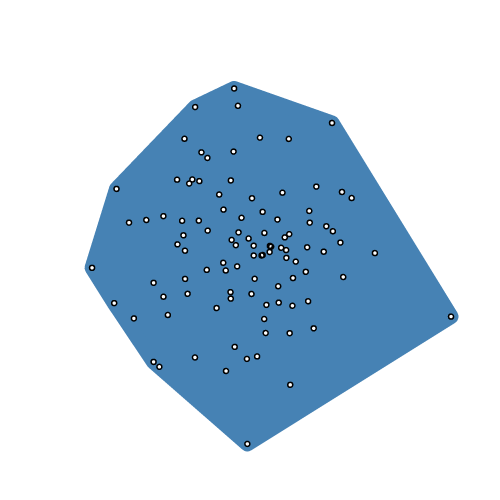W3cubDocs
/D3.js 4d3-polygon
This module provides a few basic geometric operations for two-dimensional polygons. Each polygon is represented as an array of two-element arrays [[x1, y1], [x2, y2], …], and may either be closed (wherein the first and last point are the same) or open (wherein they are not). Typically polygons are in counterclockwise order, assuming a coordinate system where the origin ⟨0,0⟩ is in the top-left corner.
Installing
If you use NPM, npm install d3-polygon. Otherwise, download the latest release. You can also load directly from d3js.org, either as a standalone library or as part of D3 4.0. AMD, CommonJS, and vanilla environments are supported. In vanilla, a d3 global is exported:
<script src="https://d3js.org/d3-polygon.v1.min.js"></script> <script> var hull = d3.polygonHull(points); </script>
Try d3-polygon in your browser.
API Reference
d3.polygonArea(polygon) <>
Returns the signed area of the specified polygon. If the vertices of the polygon are in counterclockwise order (assuming a coordinate system where the origin ⟨0,0⟩ is in the top-left corner), the returned area is positive; otherwise it is negative, or zero.
d3.polygonCentroid(polygon) <>
Returns the centroid of the specified polygon.
d3.polygonHull(points) <>

Returns the convex hull of the specified points using Andrew’s monotone chain algorithm. The returned hull is represented as an array containing a subset of the input points arranged in counterclockwise order. Returns null if points has fewer than three elements.
d3.polygonContains(polygon, point) <>
Returns true if and only if the specified point is inside the specified polygon.
d3.polygonLength(polygon) <>
Returns the length of the perimeter of the specified polygon.
© 2010–2016 Michael Bostock
Licensed under the BSD License.
https://github.com/d3/d3-polygon